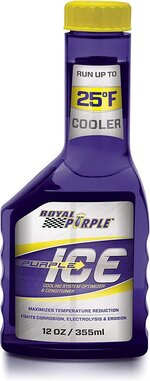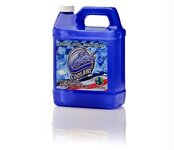yeah, they all heat soak on shutdown... basically because flow of coolant has stopped and all that stored heat energy starts to release via conduction and convection to the surrounding area. . really seems like a waste of effort to me, opening the hood to allow that initial blast of hot air to rise out of the engine compartment..
back when I was a diesel mechanic, if I had to work on an engine and it came in hot, I would remove the rocker cover ( assuming I was working inside the top end) and then aim a fan at the engine... but it still take hours before it was cool enough to be able to actually put my hands on stuff.
***NOTE*** I just realized after writing this run away bla bla bla.... it is , maybe in the wrong place? Sorry
. Moderator or Staff, if not too much trouble , please put it where it goes. Some likely will say ,
"where the sun dont shine." I get it. If so then let it be.
Thoughts / questions? Your opinions or experinces please.
We all know cars are designed to run with thermostat, coolant , water pumps, radiators and even electric cooling fans. Lots even have temp gage/alarms etc... Yet I just cant accept the way these cars throw off so much heat after any amount of driving. I get an absolute kick out of several motor oils claims that they are designed for their lubricant to make your machine run , COOLER! LOL , I recall one named
Dura Lube was taken to court and lost two or three lawsuits that proved they had zero proof to back up those claims. Funny thing is
Dura Lube is still right up there on store shelves after being proven to be nearly all 05w30 engine oil. Yep, some even say they will make your engine run 10%or 20% and as much as 100% cooler than other products.

Sorry- run away frieght train / out of control OCD kicked in again this week. Looking for somthing else to worry about or some attempt to solve a problem that probably does not even exist.
So: Anyone else pondering any of this engine cooling dynamics like me?
I been thinking of looking into some of those
"extra-cooling" products designed to add to your coolant system. I find it a whole lot easier to contemplate coolant or coolant additives could actually have some effect on temp. I used to cut half of my coolant in the Chevelles and add some stuff called
Water Wetter or some similar name. Got that idea from a couple of transmission shop buddies who were also part time circle track racers who were into all this kind of stuff. Maybe one was named
Hyper Cool?
I do realize things are done in racing that are not necesarily healthy for street and city driven vehicles. But it is often forgotten that the race tracks and drag strips have at times become the proving grounds of some really major break thru findings that help in safety and performance once in a while. So, just not so sure if is safe in all of these newer designed , super tiny engines like Toyotas , Hondas and Nissans etc... Plus the ones that toss a mini turbo in for extra ooomph. Just found the product that I used to put in Chevelles in my shop. Dug up a 1/2 used bottle and one unopened. Product is made by Rislone called
HyperCool. I recall I did use it for many years in the 75+76 Chevelles and the 72 Cutlass back in the 1980s + 1990s. Never had any issue with the use of that. What makes me pause these days is that I remember reading a good bit about cooling systems and preventive maintenence and it was said DO NOT MIX anything/absolutely nothing with the factory coolant called for by your auto manufacturer. Claims at the time (started about 2000 or so) were than anything you mix with factory coolant will react and actually cause advanced corrosion , lack of one of the the exact protections we are seeking , etc... SO, less cooling and less protection. Anyone else have any experience , using these type of coolants or "boosters" enough for a report of - good or bad? Never had an emergency need but have always kept a few jugs of factory coolant on hand from dealerships. Even keep one in the trunk for any travels longer than just routine round the block type of rides.
So ****BE COOL**** everyone. Wait a moment. I think there is actually one out there named 'Be Cool!"

I am going surfin again!





